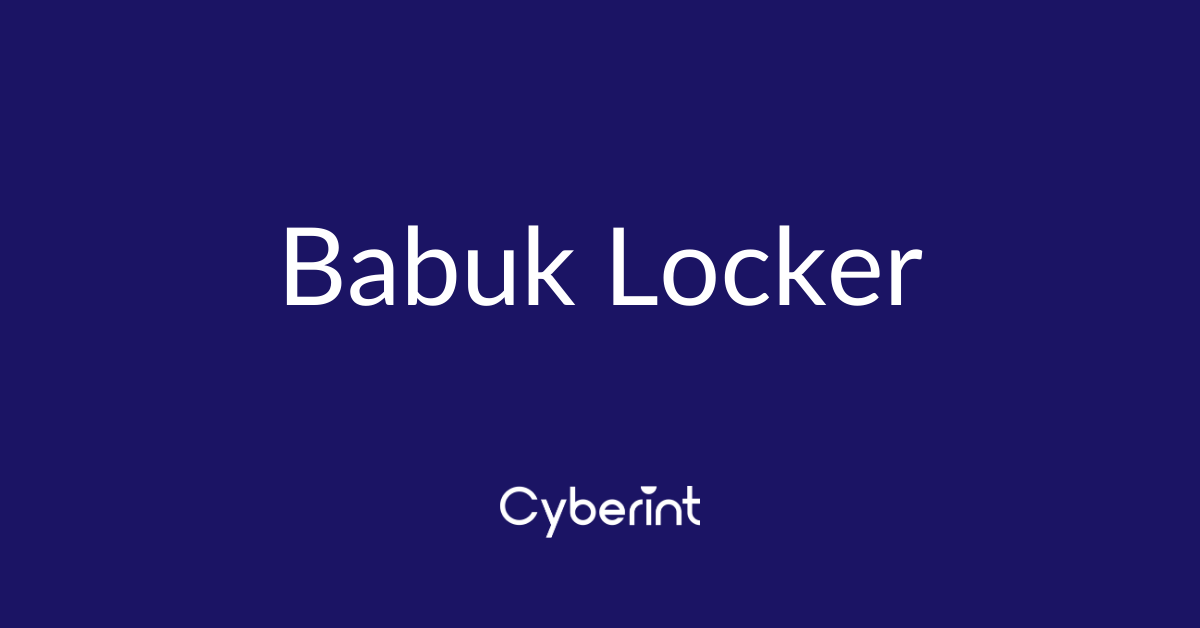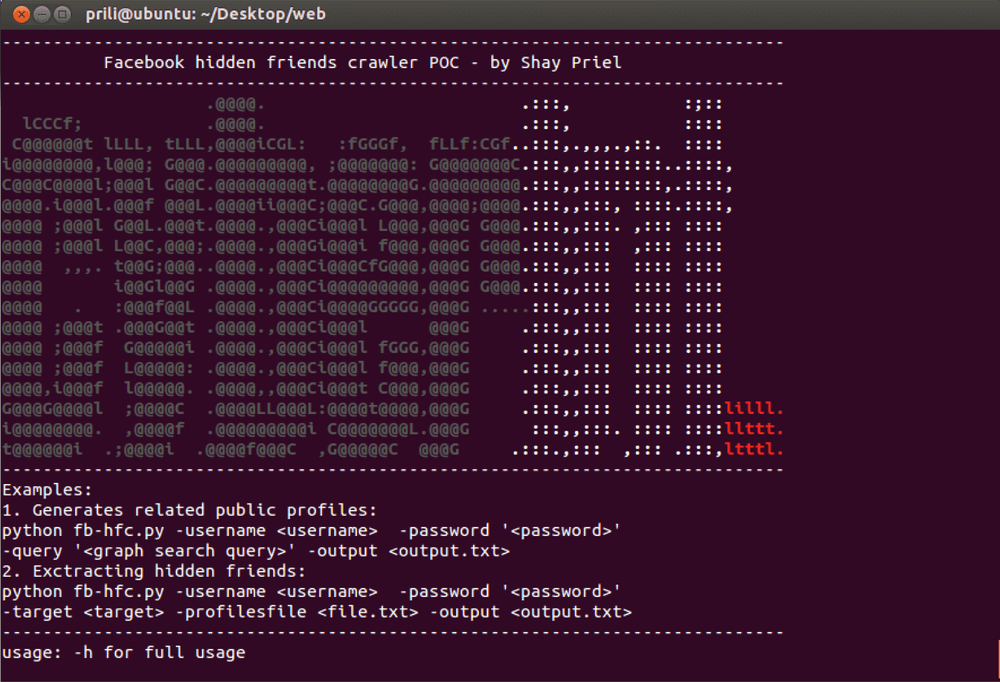


Babuk, also known as ‘Babuk Locker’, ‘Babyk’ and initially ‘Vasa Locker’, is a ransomware threat utilizing big-game hunter tactics to ‘steal, encrypt and leak’ victim data in an attempt to extort payments of reportedly up to USD 85,000 in Bitcoin (BTC).
As is often the case with threats of this nature, victims are likely determined by the ease at which they can be compromised combined with the likelihood of making payment. As such, Babuk’s leak website states that the group will not target hospitals, non-profit charities or schools as well as avoiding organizations with an annual revenue of less than USD4 million. That being said, private clinics and major universities are considered ‘fair game’ along with charitable foundations ‘who help LGBT and BLM’ causes, the latter likely demonstrating the bigoted views of the threat actor.
Seemingly consistent with the above, identifiable victims thus far include organizations operating in the digital services, engineering and healthcare sectors that have operations in Germany, Hong Kong, Sweden and the United States. Anecdotal data also suggests that malware samples have appeared in other Asian, European and North American countries although this may be as a consequence of increased security researcher activity rather than active compromises.
Whilst not much is known about how the victims were initially compromised, similar ransomware campaigns have previously taken advantage of infrastructure vulnerabilities, such as exploits found in remote desktop protocol (RDP) and virtual private network (VPN) hosts, or utilized stolen credentials to gain initial access.
Based on observations throughout January, Babuk appears to be an actively developed threat, likely set to be further fueled by profits made from their nefarious campaigns.
Demonstrating the active development, the threat actor identity ‘biba99’ posted a message on ‘RaidForums’ (Figure 1), an online forum popular with cybercriminals, suggesting that a ‘*nix’ version is being made available that could target NAS devices and VMware ESXi virtualization hosts alongside the already supported Windows hosts.
Figure 1 – Babuk Threat Actor Identity ‘biba99’ post on RaidForums (Jan 21, 2021)
Given the steady stream of victims and the active development thus far in 2021, Babuk could easily rise to be yet another infamous and credible targeted ransomware threat to organizations across multiple industries worldwide.
Given the nature of this threat, and based on behaviors of other big-game hunter ransomware groups in their targeted attacks, the initial infection vector likely involves the compromise of some account, host or service rather than the ransomware payload being delivered by a broader technique such as an unsolicited malicious email (malspam).
As such, exploitation of vulnerabilities in internet-facing hosts or the compromise of account credentials, potentially following a phishing phase, could allow the threat actors to gain access to the target network.
Once this initial access has been achieved, an element of reconnaissance is almost certainly performed in order to both move laterally within the victim network as well as identifying potential valuable data and hosts.
Subsequently, and prior to the encryption phase, the threat actor is seemingly exfiltrating sensitive data such as documents and financial records related to company confidential matters as well as customer and employee financial and personal data.
The nature of this exfiltration will require forensic analysis of a victim and, as such, no detail has been published or shared thus far. That being said, typical methods could include data transfer to some command and control (C2) infrastructure or even the use of legitimate cloud services.
Having stolen this data, victims that fail to comply with the ransom demands may find that their data is made publicly available (Figure 2) on Babuk’s ‘Leak Site’ (Figure 3) hosted on Tor.
Figure 2 – Babuk Leak Site ‘Victim Data Directories’
Figure 3 – Babuk Leak Site ‘Home Page’
Notably, based on the ransomware payload samples observed thus far, it appears that each Babuk instance is victim-specific and includes one private encryption key specific to the victim. As such, it is clear that Babuk have tailored their campaigns toward ‘big game’ victims, allowing key generation to be easily managed, rather than indiscriminately targeting individuals.
Presumably after the threat actor has identified a suitable target host and exfiltrated sensitive data from it for use in the extortion phase, the Babuk payload is delivered and can be executed using command line arguments to determine if network shares will be encrypted along with local drives.
Upon execution, Babuk follows the typical ransomware process of first attempting to terminate services and processes related to common applications, backup programs, endpoint security solutions and server software (Figures 4 & 5), for reference a list of these is provided in Appendix A.
Figure 4 – Example Service Termination
Figure 5 – Example Process Termination
In addition to evading detection during the encryption process and complicating recovery efforts, terminating these processes and services ensures that open files are closed in preparation for being overwritten with encrypted data.
Again, utilizing a common ransomware technique, Windows shadow copies are deleted, in yet another step to thwart recovery, through the execution of the Volume Shadow Copy command line administration utility:
"C:\Windows\System32\cmd.exe" /c vssadmin.exe delete shadows /all /quietFinally in the preparation stage, the ‘Recycle Bin’ is emptied (Figure 6) presumably to ensure that no data can be recovered from it.
Figure 6 – Windows ‘Recycle Bin’ Emptied
As is to be expected, the ransomware first determines the disk type (fixed, network, optical, RAM or removable) using a list of drive letters before enumerating the available volumes and logical drives (Figure 7) to determine potential sources of data for encryption.
Figure 7 – Drive and Volume Enumeration
Having obtained the list of potential data locations, a directory traversal process compares each directory and filename against a ‘safe’ list (Figure 8) to ensure that critical system files are not encrypted to allow the victim host to remain operational with internet access.
Figure 8 – Directory/Filename ‘Safe’ List Comparison
Specifically, directories related to installed applications, the operating system and web browsers are excluded from the encryption process:
$Recycle.Bin, All Users, Google, Internet Explorer, Mozilla, Mozilla Firefox, Opera, Opera Software, ProgramData, Program Files (x86), Program Files, Tor Browser, Windows, Windows.oldIn addition to the following core files also being excluded from the encryption process:
autorun.inf, boot.ini, bootfont.bin, bootmgfw.efi, bootmgr, bootmgr.efi, bootsect.bak, desktop.ini, iconcache.db, ntldr, ntuser.dat, ntuser.dat.log, ntuser.ini, thumbs.dbOnce a file candidate for encryption is encountered, Babuk checks to confirm that it has not already been encrypted based on the appended file extension of .__NIST_K571__ (v3) or .babyk (v4). Additionally, any existing ransom note named How To Restore Your Files.txt is also skipped.
Subsequently, assuming the file is to be encrypted, the Babuk file extension is appended and the file is opened ready to be overwritten with encrypted data (Figure 9).
Figure 9 – Babuk File Extension Append & Preparation
To ensure that the file can be overwritten without encountering errors due to it being in use by another process, and in addition to the earlier process and service termination, the Windows Restart Manager appears to be utilized (Figure 10).
Figure 10 – Observed Windows Restart Manager Function Calls
The Windows Restart Manager was initially introduced to eliminate or reduce the number of restarts required during legitimate installations or updates and has seemingly been adopted by some ransomware threats for nefarious purposes. Specifically, the Restart Manager performs the following steps that provide obvious benefits to a malicious file manipulation process:
RmStartSession – Starts the Restart Manager session;RmRegisterResources – Registers resources, in this case the targeted filename;RmGetList – Determine which processes or services are using the registered resource (file);RmShutdown – Shuts down any identified process or service using the registered resource;RmRestart – Restarts any identified process or service after the file modification;RmEndSession – Closes the Restart Manager session.Utilizing the ChaCha8 stream cipher for encryption and Elliptic-curve Diffie-Hellman (ECDH) for key generation (Figure 11), the targeted file is encrypted and, in the absence of gaining access to the private key or paying the ransom to receive the decryption utility, decryption will likely be incredibly difficult.
Figure 11 – Babuk ‘About’ Page
For reference, those interested in an expanded explanation of the Babuk encryption routine are encouraged to read the personal blog article authored by Chuong Dong [1], an independent security researcher, which details key generation, a ‘mediocre’ multithreading approach and the approach to files larger than 41MB which are reportedly split into three regions with only the first 10MB being encrypted.
Further complicating decryption efforts, Babuk v3 was reportedly observed in January 2021 as implementing a faulty public key generation routine that would prevent even the threat actor from successfully recovering data. This issue was since resolved in version 4, along with other subtle changes including the introduction of the .babyk file extension and a new mutual exclusion object (mutex) abusing the security researcher Choung Dong.
Once files within a directory have been encrypted, a text file named How To Restore Your Files.txt is created (Figure 12) and contains the ransom note that is displayed at the conclusion of the ransomware process.
Figure 12 – Ransom Note Creation
Finally, the encryption key utilized by Babuk is saved to %appdata%\ecdh_pub_k.bin and will be required by the victim should they contact the threat actor to pay the ransom and obtain the decryption utility.
Victims infected by Babuk will, on conclusion of the encryption phase, be presented with a text file containing the ransom note (Appendix B) that instructs them to contact the threat actor via a Tor hidden service (Figure 13) using a link that includes a unique victim identifier.
Figure 13 – Babuk Contact Site (Tor Hidden Service)
Based on observed interactions with previous victims, the threat actor may first seek to determine if the contact is a ‘recovery company’ and if the victim has ransomware insurance, likely in an attempt to extort a higher ransom payment if either of these is the case.
The victim, having responded to these initial questions, will likely then be prompted to share 4-5 encrypted files, of no more than 10MB in size, along with the corresponding %appdata%\ecdh_pub_k.bin file from an infected host. The threat actor will then decrypted these files as proof of their capabilities and presumably seek payment to decrypt the remaining data.
Those failing to contact the threat actor, or meet their demands, will likely in the first instance find themselves ‘named and shamed’ on the threat actor’s leak site along with a deadline for compliance.
Failure to meet the threat actor’s demands at this stage will, based on what has been observed thus far, result in the stolen data being leaked via this Tor hidden service.
As is to be expected in ransomware attacks of this nature, the threat actor requests that payment is made using Bitcoin and provides basic instructions for the use of their decryption utility (Figure 14).
Figure 14 – Babuk Payment Terms and Decryption Utility Instructions
Whilst it Babuk payloads will likely differ between victims, the following observed indicators of compromise (IOC) may prove useful to defenders further investigating this threat.
hxxp://babukq4e2p4wu4iq.onion/login.php?id=<VICTIM_IDENTIFIER>hxxp://gtmx56k4hutn3ikv.onionef326291febe84d6b39d2e5cea7e99a02407892729d688c27dcc444a2ae0b5443dda3ee9164d6815a18a2c23651a53c35d52e3a5ad375001ec824cf532c202e61b9412ca5e9deb29aeaa37be05ae8d0a8a636c12fdff8c17032aa017f6075c0230fcff7add11ea6685a233c8ce1fc30abe67044630524a6eb363573a4a9f88b8550771bbf8a3e5625d6ec76d70ed86f6e443f07ce80ff73e47f8249ddd72a8cf8140004ff3cf4923c928708505754497e48d26d822a95d63bd2ed54e14f19766704a0fa7de19564bc743fb68aa0652e38bf86e8ab694bc079b15f945c85f43208203c2f00ecd3ae960cb3247a7d7bfb35e55c38939607c85dbdb5c92f0495fa9afcf265a1dcd9eab5aab270d48aa561e4ddeb71c05e32c857d3b809bb64c0430c5167053129bd4a5542cfef9e739b0443e22e184cb4c0b57c049b448f030cf15babuk_v3DoYouWantToHaveSexWithCoungDong.__NIST_K571__.babykHow To Restore Your Files.txt%appdata%\ecdh_pub_k.binDECR.TXT (Early ‘Vasa Locker’ version)| Technique | Tactic |
| T1001 – Data Obfuscation | Command & Control |
| T1005 – Data from Local System | Collection |
| T1007 – System Service Discovery | Discovery |
| T1012 – Query Registry | Discovery |
| T1018 – Remote System Discovery | Discovery |
| T1036 – Masquerading | Defense Evasion |
| T1055 – Process Injection | Defense Evasion, Privilege Escalation |
| T1055.012 – Process Injection: Process Hollowing | Defense Evasion, Privilege Escalation |
| T1057 – Process Discovery | Discovery |
| T1067 – Bootkit | Persistence |
| T1070.004 – File Deletion | Defense Evasion |
| T1081 – Credentials in Files | Credential Access |
| T1082 – System Information Discovery | Discovery |
| T1083 – File and Directory Discovery | Discovery |
| T1090 – Proxy | Command & Control |
| T1091 – Replication Through Removable Media | Initial Access, Lateral Movement |
| T1105 – Ingress Tool Transfer | Command & Control |
| T1107 – File Deletion | Defense Evasion |
| T1119 – Automated Collection | Collection |
| T1120 – Peripheral Device Discovery | Discovery |
| T1135 – Network Share Discovery | Discovery |
| T1143 – Hidden Window | Defense Evasion |
| T1486 – Data Encrypted for Impact | Impact |
| T1490 – Inhibit System Recovery | Impact |
| T1497 – Virtualization/Sandbox Evasion | Defense Evasion, Discovery |
| T1518.001 – Security Software Discovery | Discovery |
| T1547.001 – Registry Run Keys / Startup Folder | Persistence, Privilege Escalation |
Processes and services associated with the following application, data backup and endpoint security names are terminated by Babuk during its execution along with any service containing the string svc$:
Intuit.QuickBooks.FCS, QBCFMonitorService, QBFCService, QBIDPServiceexcel.exe, infopath.exe, msaccess.exe, mspub.exe, onenote.exe, outlook.exe, powerpnt.exe, visio.exe, winword.exenotepad.exe, wordpad.exefirefox.exetbirdconfig.exe, thunderbird.exethebat.exesteam.exeAcronisAgent, AcrSch2SvcCAARCUpdateSvc,CASAD2DWebSvcGxBlr, GxCIMgr, GxCVD, GxFWD, GxVssVSNAPvss, VSSProvidersqbcoreservice.exestc_raw_agentveeam, VeeamDeploymentService, VeeamNFSSvc, VeeamTransportSvcBackupExecAgentAccelerator, BackupExecAgentBrowser, BackupExecDiveciMediaService, BackupExecJobEngine, BackupExecManagementService, BackupExecRPCService, BackupExecVSSProvider, PDVFSServiceYooBackup, YooITzhudongfangyuccEvtMgr, ccSetMgr, DefWatch, RTVscan, SavRoamagntsvc.exesophosencsvc.exememtas, mepocssqlsvc, sql.exeisqlplussvc.exe, mydesktopqos.exe, mydesktopservice.exe, ocautoupds.exe, ocomm.exe, oracle.exe, ocssd.exe, dbsnmp.exe, synctime.exe, xfssvccon.exedbeng50.exe
———– [ Hello, <VICTIM_ORGANIZATION> ] ————->
****BY BABUK LOCKER****
What happend?
———————————————-
Your computers and servers are encrypted, backups are deleted from your network and copied. We use strong encryption algorithms, so you cannot decrypt your data.
But you can restore everything by purchasing a special program from us – a universal decoder. This program will restore your entire network.
Follow our instructions below and you will recover all your data.
If you continue to ignore this for a long time, we will start reporting the hack to mainstream media and posting your data to the dark web.
What guarantees?
———————————————-
We value our reputation. If we do not do our work and liabilities, nobody will pay us. This is not in our interests.
All our decryption software is perfectly tested and will decrypt your data. We will also provide support in case of problems.
We guarantee to decrypt one file for free. Go to the site and contact us.
What information compromised?
———————————————-
We copied more than <STOLEN_DATA_VOLUME> from your internal network, here are some proofs, for additional confirmations, please chat with us
In cases of ignoring us, the information will be released to the public.
<IMGUR_IMAGE_LINKS>
How to contact us?
———————————————-
Using TOR Browser ( hxxps://www.torproject.org/download/ ):
hxxp://babukq4e2p4wu4iq.onion/login.php?id=<VICTIM_IDENTIFIER>
!!! DANGER !!!
DO NOT MODIFY or try to RECOVER any files yourself. We WILL NOT be able to RESTORE them.
!!! DANGER !!
## [ babyk ransomware ] ##
* What happend?
———————————————-
Your computers and servers are encrypted, backups are deleted from your network and copied.
We use strong encryption algorithms, so you cannot decrypt your data without us.
But you can restore everything by purchasing a special program from us – a universal decoder.
This program will restore your entire network. Follow our instructions below and you will recover all your data.
If you continue to ignore this for a long time, we will start reporting the hack to mainstream media and posting
your data to the dark web.
* What guarantees?
———————————————-
We value our reputation. If we do not do our work and liabilities, nobody will pay us. This is not in our interests.
All our decryption software is perfectly tested and will decrypt your data. We will also provide support in case of problems.
We guarantee to decrypt one file for free. Go to the site and contact us.
* What information compromised?
———————————————-
We copied many data from your internal network,
here are some proofs (private link): http://gtmx56k4hutn3ikv.onion/?<VICTIM_IDENTIFIER>
For additional confirmations, please chat with us/
In cases of ignoring us, the information will be released to the public in blog http://gtmx56k4hutn3ikv.onion/
* How to contact us?
———————————————-
1) Download for browser: https://www.torproject.org/download/
2) Open it
3) Follow this link in tor browser: http://babukq4e2p4wu4iq.onion/login.php?id=<VICTIM_IDENTIFIER>
[1] http://chuongdong.com/reverse engineering/2021/01/03/BabukRansomware/
Fill in your business email to start


